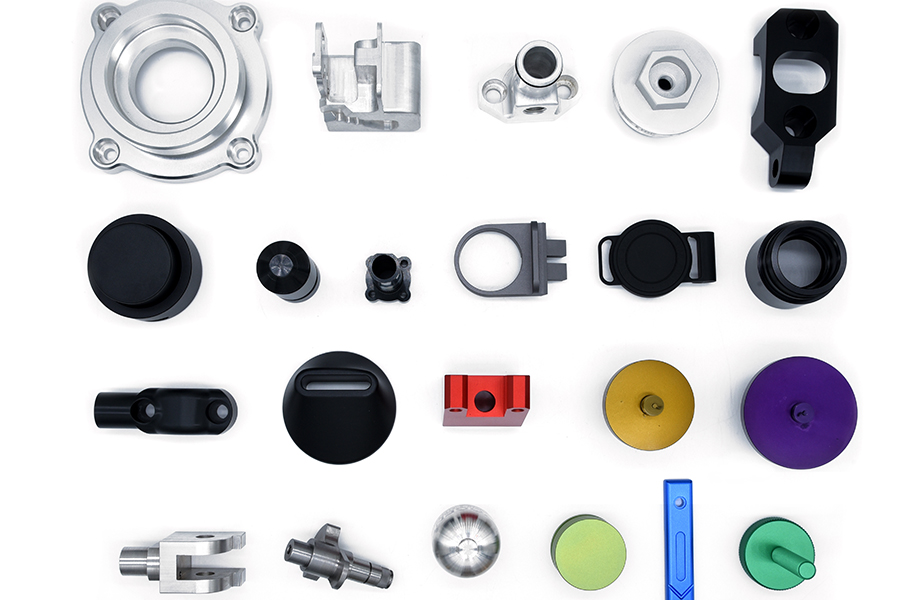CNC precision hardware custom parts processing has great advantages over traditional semi-automatic or manual hardware processing. For example, the aluminum alloy parts produced by CNC machine tools have high precision, then CNC precision hardware processing, production What are the requirements and regulations for the process?
- In order to ensure the precision of CNC precision hardware processing, it is best to carry out different processing procedures separately (such as roughing and finishing).
Due to the relatively large amount of drilling during rough machining, the product workpiece is subjected to fast cutting speed, large clamping force, high calorific value, and its machined surface has a relatively obvious process hardening condition, and the internal structure of the product workpiece will be accompanied by a large amount of Due to the thermal stress, the precision of the finished part will be rapidly lost due to the internal stress.
- Effective use of cnc processing equipment
Roughing is mainly to remove most of the processing capacity, and the precision of product processing is not high. Therefore, roughing should be carried out on equipment with relatively high output power and low precision. Roughing and finishing are processed on different equipment, which can not only give full play to the working ability of machinery and equipment, but also increase the service life of precision CNC lathes.
- Indispensable hardening process (ie heat treatment process)
The heat treatment process is as follows: 1. In order to improve the drilling processing characteristics of metal materials, such as quenching, normalizing, aging treatment, etc., it is generally arranged before the processing of mechanical equipment: 2. In order to remove thermal stress, such as quenching and tempering treatment, heat treatment, etc., It is generally arranged after roughing and before finishing. 3. In order to better improve the physical properties of the parts, heat treatment, quenching, etc. are generally arranged after the machining of mechanical equipment. For some parts with high machining precision standards, corresponding heat treatment steps (ultra-low temperature quenching or quenching and tempering treatment steps) should also be set to eliminate residual stress.
Heat treatment usually involves heating, holding, cooling, usually after roughing. The processing of CNC hardware parts is divided into cold treatment and heat treatment according to the temperature at which the parts are processed. Processing at room temperature that does not result in chemical or phase transformation of the parts is called cold working. The chemical or phase transformation of the parts caused by the fabrication and processing at higher than normal temperature is called thermal processing. CNC hardware processing will cause corresponding changes in the performance characteristics of the material itself and its appearance structure when the product workpiece is processed and produced.
With the continuous development and progress of the domestic manufacturing industry, the machining and manufacturing industry has developed and taken a big step forward. The production and processing technology application fields of Dongguan precision hardware products are also widely used, such as household appliances, vehicles, hardware accessories and other fields. Product workpieces for medical production applications use more or less high-precision parts. It may be a spare part, or it may be a key component in the manufacture of mechanical equipment.
After the raw materials and blank types of the mechanical parts are determined, the heat treatment process is mainly used to ensure the required performance of the parts. According to the purpose of heat treatment and the function of process technology, the specific position of heat treatment technology in the production process path is appropriately arranged. The process of annealing and normalizing is usually allocated after blank production and before cutting. In the high-precision parts, in order to better remove the residual stress of cutting and manufacturing, stress relief annealing should also be allocated between cutting and manufacturing technology. Compared with surface quenched parts, in order to better improve the mechanical properties of the core material, it is often necessary to carry out normalizing or quenching and tempering treatment.
Related searches:
cnc machining items brass hot forging parts
cnc machining stainless steel parts
glock slide cnc machining parts
cnc part machining
cnc machining aluminum chassis
cnc machining parts precision

